1. Introduction
By the end of this post, you would have a good understanding of how to go about selecting a washing machine in India – weigh out pros and cons of different designs, understand which features to keep an eye out for, which of them are critical and which ones are nice-to-haves, all in the context of your lifestyle needs. I will not get into brand specifics or rank different models, since brands and models will keep changing. The objective here is to help you think through your needs in detail, understand key aspects to keep in mind and select a model that’s best suited for your needs.
2. Fully automatic vs Semi-automatic washing machines
Washing machines come in two types – semi-automatic and fully-automatic, each with their pros and cons. Fully-automatic models are more popular as they are more effective and convenient, but there is a substantial market for semi-automatic models given its affordability. Here’s how they compare on different attributes:
2.1 Physical size
Semi-automatic machines have two sections/drums – One is used for washing and rinsing clothes, while the other is used for drying. So once the clothes have been washed and rinsed in one drum, you need to manually shift the clothes into the dryer.
As they have 2 drums, semi-automatic washing machines are physically larger and take up much more space. Fully automatic machines, on the other hand, have a single drum where clothes are washed, rinsed and dried. They are more compact and take up lesser floor space.
2.2 Hot water
Fully automatic machines have a provision to heat water – you just need to set it to the temperature you want, and you’re done. Consequently, these machines take up more power.
Semi-automatic washing machines on the other hand, don’t have a provision to heat water. So if you want to wash your clothes in warm water, you need to have a hot water connection in the water inlet of the washing machine. This would mean that you need to install a geyser and connect its outlet to the water inlet of the washing machine.
Washing clothes in very hot water can damage them, so it might be a good idea to either set the temperature in the geyser to a lower temperature or install a mixer right before the washing machine inlet so that you can mix the hot water with a requisite amount of cold water to get it down to the right temperature.
As semi-automatic washing machines don’t have heaters, they take up much lesser power than the fully-automatic ones. However, your overall power consumption remains the same as you use an external geyser to heat water.
2.3 Convenience
As you may have already noticed, semi-automatic washing machines are quite inconvenient. Be it the hot water setup, the additional floor space or the fact that you need to manually move the clothes from the washer to the dryer. Fully-automatic washing machines are relatively hassle-free.
2.4 Cost
Given its advantages, fully-automatic washing machines are far more expensive (around double the price) than the semi-automatic ones.
3. Top load vs front load washing machines
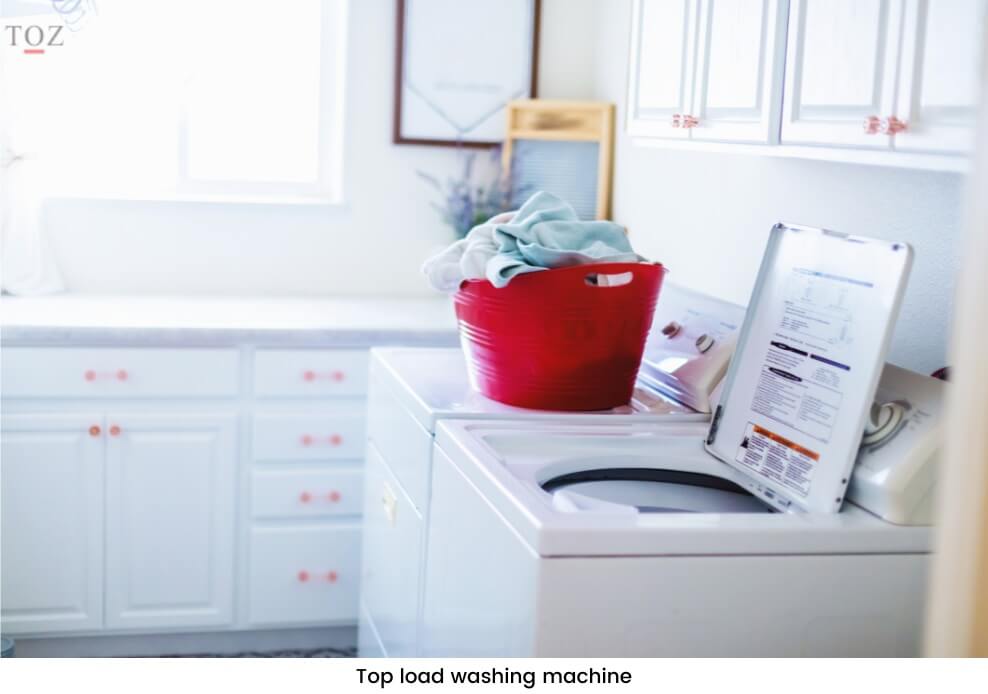
3.1 Capacity
Top load machines can have much higher capacities than front load ones and are better suited for large families.
The What-if trap:
We sometimes buy a larger size of an appliance to account for a one-off case when we may need it. The problem with this approach is that you not only spend more money on the product itself and on the subsequent monthly electricity bills, but it may also take up additional space in your house. To avoid this trap, take an objective look at what you will need 95% of the time and buy that capacity/size. In the one-off case that you may have more clothes, you could simply run the machine twice.
3.2 Efficiency – Detergent, water and power consumption
Front load washing machines are more efficient than the top load ones – they use lesser water, detergent and power to wash the same amount of clothes. Given the rising scarcity of water, this factor is quite important to keep in mind.
3.3 Damage to clothes
The tumbling motion in a front load machine is gentler on clothes – lower friction levels cause lesser wear and tear. Front-load machines have an agitator in the centre which can be rough on clothes, thereby reducing their lifespan.
3.4 Cost
Front-load washing machines are costlier than top-load ones. They are also more complex in design and construction as the drum has to be suspended using multiple supports and springs.
Washing machine drums can be made of enamel, plastic or steel. Avoid the enamel ones as the enamel tends to peel off over time. Steel drums are the best and the most durable. Consequently, they are priced higher.
3.5 Stackability
In case you opt for a separate clothes-drier, you can stack it on top of a front load machine. However, in case of a top-load machine, you cannot keep anything on top of the machine.
3.6 Convenience and Ergonomics
In case of front load machines, you need to bend to load and unload clothes. However, with top load machines, it may be difficult for shorter people to reach the base of the drum. So the convenience aspect would vary from person to person.
3.7 Temperature control
While cold water is fine for washing most clothes, warm water plays an instrumental role in getting rid of tough stains from dirty clothes. Additionally, if you want to disinfect some garments (e.g. your baby’s clothes), you can set it to a higher temperature. I always recommend going for washing machine what has an in-built water heater.
3.8 Spin speed
To dry clothes, washing machines have a spin cycle, wherein the drum rotates at high speeds and the water gets removed due to the centrifugal force generated. Higher the spin speed, better the drying ability, higher the cost.
Unfortunately, delicate clothes may tear at higher spin speeds. Hence every washing machine has a setting for delicate clothes, wherein the spin speed is lower at about 300-500 RPM (rotations per minute).
Personal experience:
I have found a spin speed of 1200 RPM more than sufficient for my needs. The clothes dry quite quickly once I put them out to dry in the balcony after the spin cycle. So I wouldn’t be willing to pay more just for a higher spin speed beyond 1200 RPM.
3.9 Serviceability
As a general rule, always research about the customer service level of a brand before buying their product. And make sure you check the service levels in your locality as service levels can vary significantly across cities and even areas within cities.
3.10 Smart washing machine
Smart washing machines enable you to switch on/off the machine remotely via an app on your phone so that the washing cycle is complete by the time you reach home. You can also download customised washing cycle programs based on the clothes you are washing.
Personal experience:
I didn’t see much value in both of these features when I was buying my washing machine. While the first one may suit some folks, I see almost no value in the second. Washing machines already come with 8-10 wash-programs and we up using just 1 or 2 of them at home; there’s little chance I would download new wash cycle programs.
4. Some considerations for front load washing machines
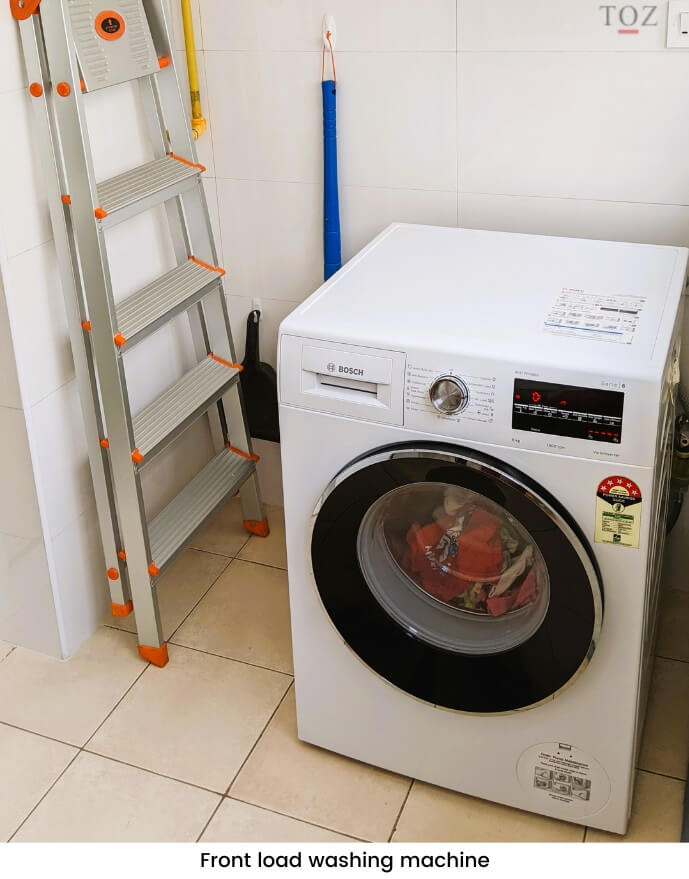
4.1 Drum size
For the same wash capacity, you will find that some models have deeper drums than others. The compact machines are generally about 18 inches deep and are ideal if you have limited space. The models with deeper drums are generally 2 feet deep and are useful for washing larger items like bedsheets and comforters. If you have the space at home, opt for the one with a larger drum.
4.2 Inverter motor
Most washing machines run at fixed speeds and use a fixed amount of power. However, those with inverter motors, use sensors to detect the load of clothes and adapt the speed to optimise power usage.
4.3 Conventional motor vs Direct-drive motor
Depending on where you keep the washing machine at home, the noise the machine makes while running becomes important.
In conventional washing machines, the motor is connected to the drum using a belt and pulley system. This setup leads to more vibration, noise and inefficiencies caused by friction. The belt also needs to be replaced every few years. However, recent advancements have significantly reduced the noise levels in these motors.
Direct-drive motors are directly connected to the drum, thus eliminating the need of a belt. This leads to lower frictional losses and lesser vibration and noise. However, the depth of the drum is lesser, since the motor is fixed right behind the drum.
5. Is a washing machine stand necessary?
Every store will try to sell you a stand on which you can keep the washing machine, the benefit being that you will be able to clean the area under the washing machine. You don’t necessarily have to buy them as they are not mandatory. All washing machines (across brands) are designed to be most stable when placed directly on the ground. The issue with stands is that they lose their stability over time and the washing machine starts shifting its position during spin cycles, which in-turn poses several risks. So you need to keep replacing the stand every few years. Surprisingly, even the installation executives from most manufacturers try to sell you a stand (the profit margins are good I guess 😊).
6. Does it make sense to buy a separate clothes dryer?
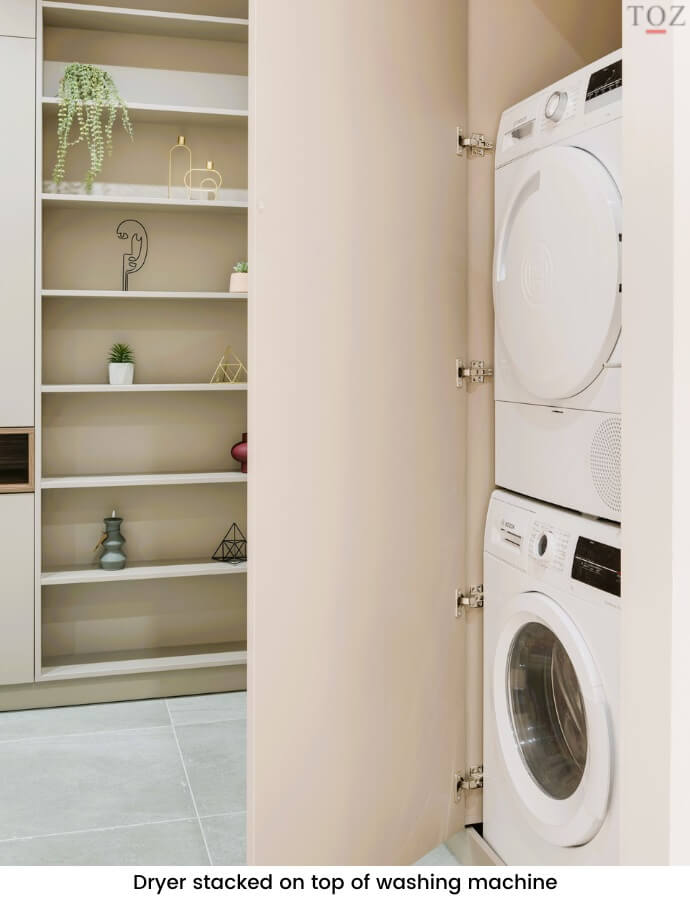
Most washing machines will dry clothes up to 80% or so, after which you need to put them out to dry. This does not suit some people – they may be living in very humid regions or may not have enough place at home to put them out to dry. In such cases you need artificially heated hot air to dry the clothes. You have 2 alternatives:
- Separate clothes dryer
These machines can typically be stacked on top of a front load washing machine, as they usually are of the same size. These are quite common in other countries.
- Washing machine with dryer
These are premium washing machines that have the ability to dry clothes completely. This is useful especially if you don’t have enough space. However, they are about 50% costlier than normal washing machines. Low demand has also not helped in reducing prices.
Personal experience:
Separate clothes dryers are quite common in other countries. I’ve had a mixed experience using them. If the temperature is too high, the fabric may start pilling or the garment may even shrink. I realised a lot depends on the ability of the fabric of your clothes to handle high temperatures. Delicate fabrics often get damaged. Also, since a typical wash cycle would include garments of different fabrics, you need to set it to the lowest temperature that’s ok for all the clothes, unload the clothes from the dryer when they are 95% dry and allow the remaining 5% to dry in your room. Very inconvenient.
Air-drying is always better than drying your clothes in a machine; you save on electricity and your clothes last longer. Drying them in the sun will further disinfect them and remove odours.
7. Maintaining your washing machine
Apart from regularly cleaning the lint filter of your washing machine once every couple of months or so, you must get the machine de-scaled from time to time. Hard water contains salts that gradually settle in the interiors of a washing machine over time. This limescale reduces the efficiency, wash quality as well as the longevity of the machine. De-scaling is a simple process, wherein you need to add a de-scaling powder to the machine and run a particular cycle.
The frequency of getting the machine descaled varies from 6 months to 2 years, depending on the hardness of water in your area. The installation executive will use a water hardness measurement device and let you know the frequency.
Front load washing machines have a rubber seal that comes in contact with the door. This must be wiped after each wash, as it is prone to mold if it remains damp.
8. Summary
- Fully automatic washing machines are better in terms of the convenience and size, but are relatively costlier than the semi-automatic ones.
- Top load models are better suited for larger families as they can handle much higher loads. They also cost lesser than their front load counterparts.
- Front load models
- They are more efficient as they consume lesser water, detergent and power. They are gentler on clothes and allow for stacking a dryer on top of them.
- If you have the space, it’s better to go for a model with a deeper drum as it allows for washing larger items like bedsheets.
- In case you need lower noise levels when the machine is running, it is better to opt for models that use a direct drive motor.
- Provision of hot water is very useful – it’s convenient and improves wash quality significantly.
- Keep ergonomics and serviceability in mind when selecting your machine.
- Washing machine stands are not mandatory, buy one only if you need it.
- Dryers are convenient, but they take up a lot of power and can potentially damage some clothes, especially delicate ones. Opt for one only if you have a compulsive need for it.
- Remember to de-scale your washing machine from time to time – it improves the longevity of the machine, keeps it efficient and prevents degradation of wash quality.
Have questions or queries?
If you have any queries, feel free to mention it in the comments section below; I will do my best to answer them. Please allow a few days for me to respond. If I (or any other reader) can answer it, then good. If not, atleast it will be something for the next reader to keep in mind. In case you have any learnings or experience to share, do mention it there for the benefit of other readers.
In case you are planning to design your kitchen from scratch, you can refer my guide on planning your kitchen design where I have detailed out a structured approach on how to going about it. It takes a deeper look at design and material considerations you must keep in mind for different kitchen components like cabinets, shutters, drawers, countertop, fittings, etc.
If you are looking to buy new home appliances, you can refer to a few of my other posts on:
- Selecting the right refrigerator
- Kitchen chimney, hob and exhaust fan
- A comparison of a microwave, OTG and convection oven – know which one is best suited for your needs.
- How to choose a dishwasher
Given that working from home has become so prevalent now, I have written a post on how to go about designing and setting up your home office – it’s important to get ergonomics right, if you plan to work long hours from home.
In case you are planning to get the overall interiors of your home done, then I’d suggested going through the home interior design planning process (HIDPP), where I detail out how to go about planning the interior design of your house from a layman’s perspective. It’s a systematic approach to ensure you’ve asked the right questions, assessed your needs, understood the pros and cons of different alternatives, budgeted prudently and designed your house in a way that’s optimally serves your needs.
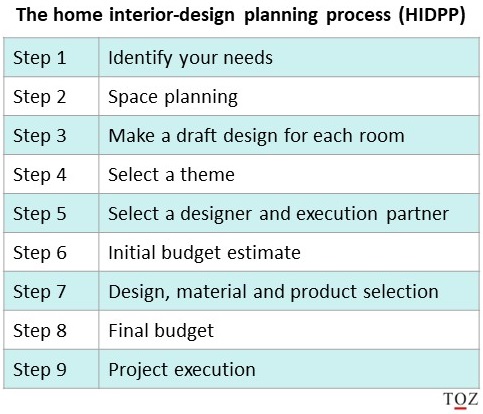
Here are the links to the respective posts:
Share this post:

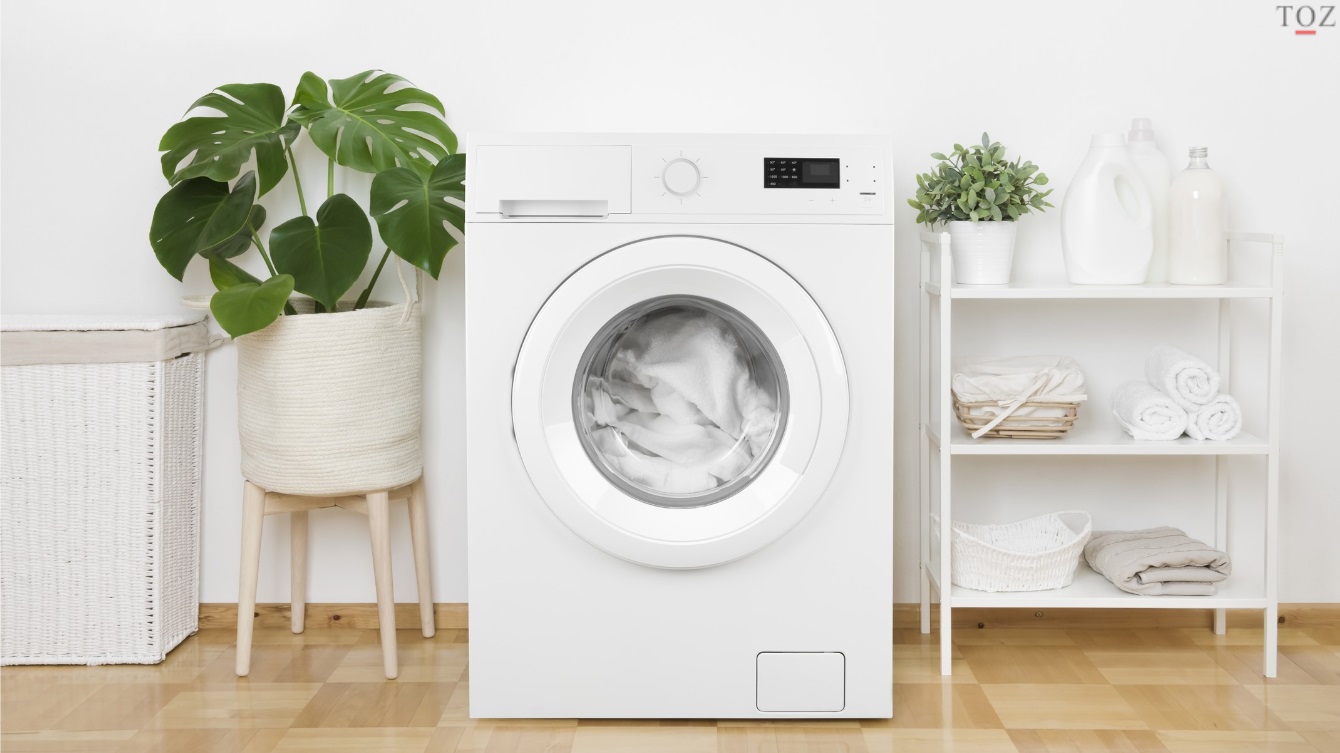
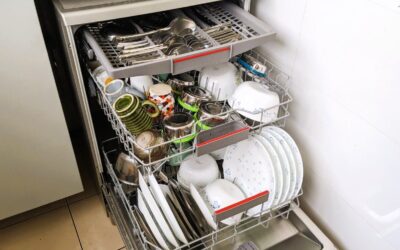



Which machine is better in terms of reducing the number of cotton bobblings that stick to your clothes?
Hi
To avoid bobbling:
1) Opt for front-load washing machine instead of a top load one.
2) Set the right temperature. Cloth materials (silk, nylon, polyester, etc.) vary in terms of the maximum temperature they can handle. Stick to the lowest. I generally have found 40 degrees celcius to work fine.
3) Turn your clothes inside-out before putting it them the washing machine.
4) Use the gentle wash-cycle.
5) Use lower spin speeds.